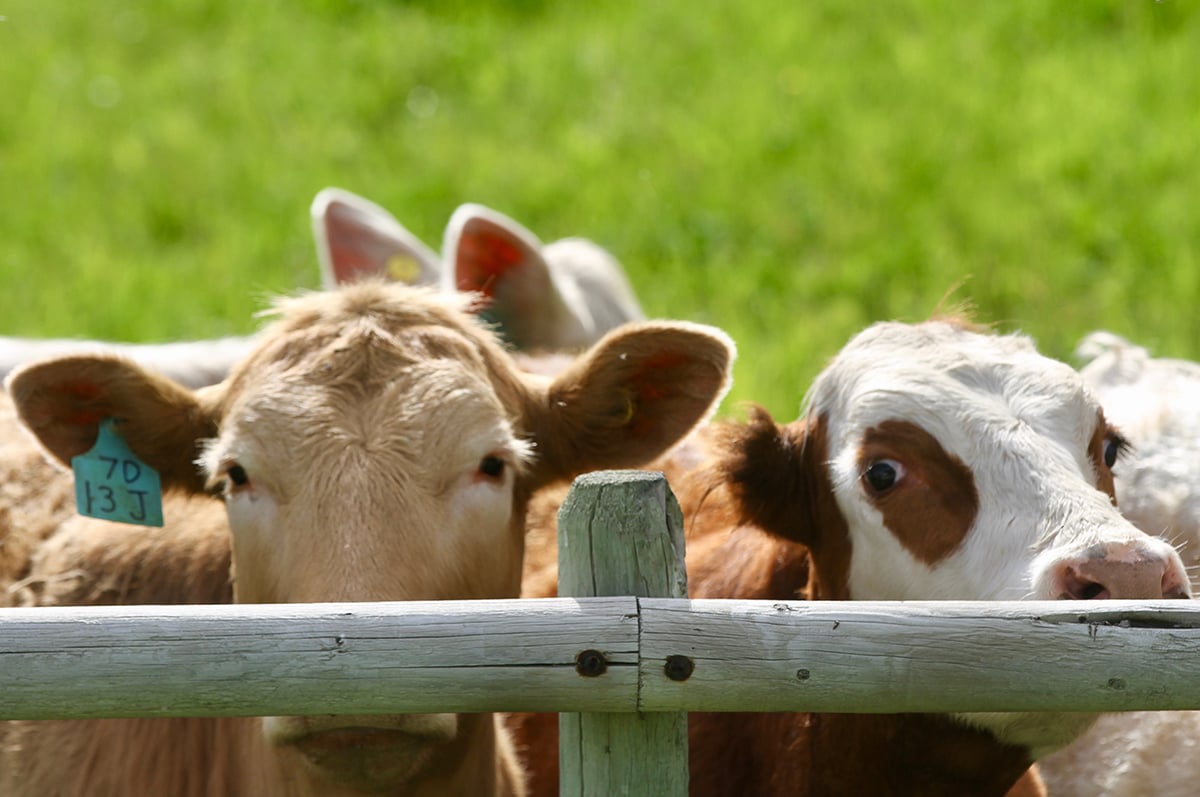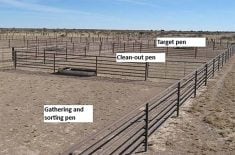LACOMBE, Alta. – Studying rumen science 101 may help beef producers understand how cattle eat and why they sometimes have bad reactions to certain feed.
“You don’t feed cattle. You feed the bugs residing in the digestive tract,” said ruminant scientist Tim McAllister from Agriculture Canada’s Lethbridge Research Centre.
Cattle don’t produce the enzyme that digests feed made from cellulose, sugar and starch, instead relying on bacteria, protozoa and fungi to break down feed to produce energy and synthesize protein.
Dairy cattle produce four pounds of bacteria a day and beef animals produce 1.5 to two lb. Ten billion bacteria exist in every cubic centimetre of rumen fluid.
Read Also

Feeder market consolidates at historic highs
For the week ending Sept. 6, Western Canadian feeder cattle markets were relatively unchanged compared to seven days earlier.
About 80 percent of the energy an animal obtains from forage is created by the bacteria that live in its rumen. These bacteria produce compounds called volatile fatty acids that cross the rumen wall and move into the bloodstream as an energy source.
“That is actually the major energy source to the grazing animal,” McAllister told a pasture school in Lacombe June 4.
These organisms also use nitrogen in forage to synthesize amino acids and produce microbial protein digested farther down the tract.
Rumen contents look like a thick soup but the microbe community is very organized.
Each type digests only one component of the feed. One may digest starch while another goes after fibre.
“The bacteria change even with the type of grain you feed,” he said.
Bacteria seek to digest feed in the easiest way possible.
Cellulose is the most difficult to digest, followed by starch and sugar. For example, alfalfa stems are easier to digest than barley straw, of which half ends up in the feces.
The more mature the plant, the harder it is to digest. Less energy and protein may be available so the animals may not gain weight.
“Once you end up with an accumulation of those indigestible components, the bacteria can no longer proceed with any more digestion and that material ends up in the feces,” McAllister said.
As a result, the microbes prefer chewed or chopped forage.
They enter the open ends and digest from the inside out. They also drill holes into grain and digest from the inside.
Protozoa are another member of the community. Protozoa are larger than bacteria and digest about 30 percent of the fibre found in the rumen. They also consume bacteria for protein. About 100,000 protozoa live in each cc of rumen fluid.
There are 200 species of protozoa in a forage diet and one species present in a grain based diet.
Rumen fungi work on carbohydrates and sugars. They crack open seeds and other feed so bacteria can move in.
“All these bacteria work together as a community to carry out feed digestion and it is very important that we try to have a diversity and have that community working together to carry out forage digestion,” McAllister said.















